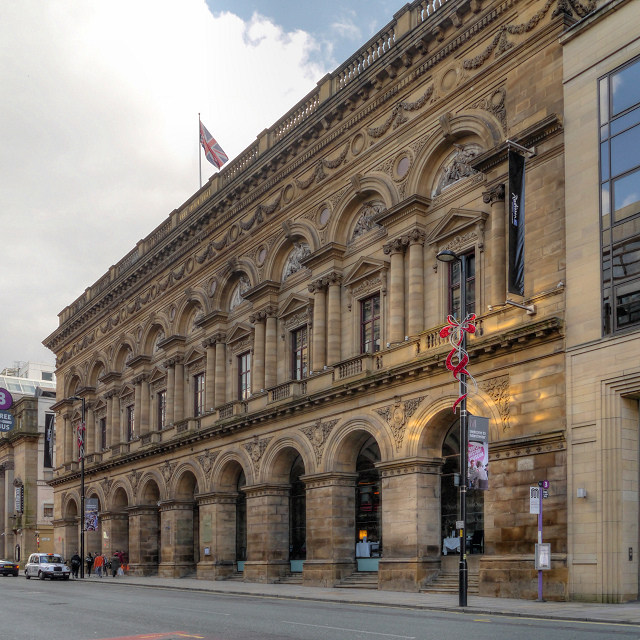The Free Trade Hall in Peter Street, Manchester, England, was a public hall constructed in 1853–1856 on St Peter’s Fields, the site of the Peterloo Massacre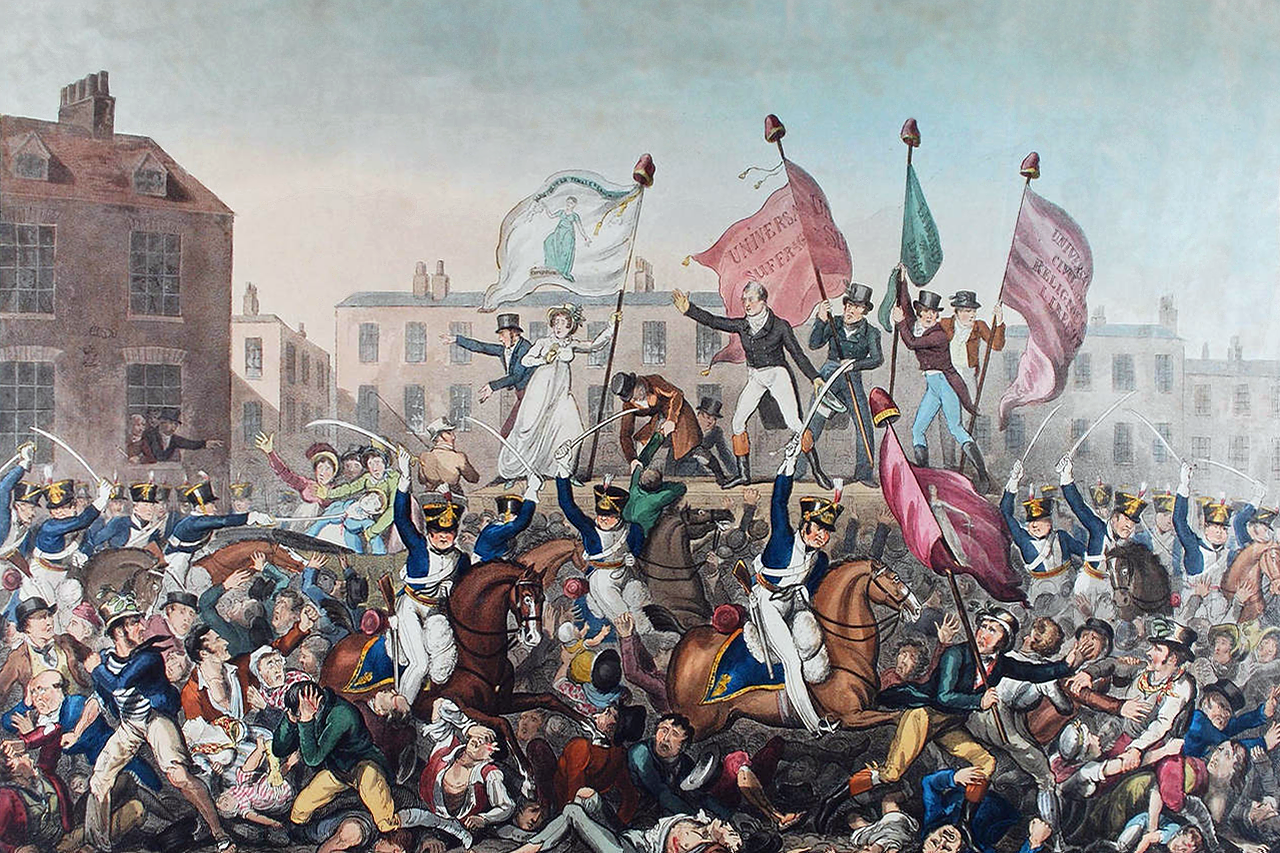 Cavalry charge on 16 August 1819 into a crowd of 60,000–80,000 gathered at St Peter's Field, Manchester, England to demand the reform of parliamentary representation
Cavalry charge on 16 August 1819 into a crowd of 60,000–80,000 gathered at St Peter's Field, Manchester, England to demand the reform of parliamentary representation Cavalry charge on 16 August 1819 into a crowd of 60,000–80,000 gathered at St Peter's Field, Manchester, England to demand the reform of parliamentary representation, and is now a Radisson hotel. The hall, by architect Edward Walters, was built to commemorate the repeal of the Corn Laws in 1846 and was owned by Manchester Corporation. It was bombed in the Manchester Blitz
Cavalry charge on 16 August 1819 into a crowd of 60,000–80,000 gathered at St Peter's Field, Manchester, England to demand the reform of parliamentary representation, and is now a Radisson hotel. The hall, by architect Edward Walters, was built to commemorate the repeal of the Corn Laws in 1846 and was owned by Manchester Corporation. It was bombed in the Manchester Blitz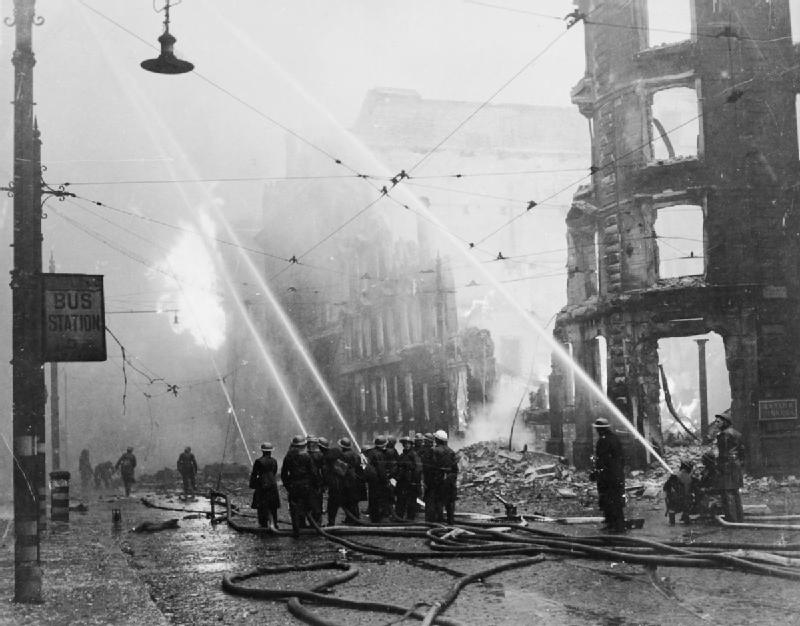 Heavy bombing of the city of Manchester and its surrounding areas in North West England during the Second World War by the Nazi German Luftwaffe.
Heavy bombing of the city of Manchester and its surrounding areas in North West England during the Second World War by the Nazi German Luftwaffe. Heavy bombing of the city of Manchester and its surrounding areas in North West England during the Second World War by the Nazi German Luftwaffe. and its interior subsequently rebuilt. The Free Trade Hall was a venue for public meetings and political speeches and was Manchester’s premier concert venue until the construction of the Bridgewater Hall in 1996. It was designated a Grade II* listed building on 18 December 1963.
Heavy bombing of the city of Manchester and its surrounding areas in North West England during the Second World War by the Nazi German Luftwaffe. and its interior subsequently rebuilt. The Free Trade Hall was a venue for public meetings and political speeches and was Manchester’s premier concert venue until the construction of the Bridgewater Hall in 1996. It was designated a Grade II* listed building on 18 December 1963.
History
The Free Trade Hall was built as a public hall between 1853 and 1856 by Edward Walters on land given by Richard Cobden in St Peter’s Fields, the site of the Peterloo Massacre Cavalry charge on 16 August 1819 into a crowd of 60,000–80,000 gathered at St Peter's Field, Manchester, England to demand the reform of parliamentary representation
Cavalry charge on 16 August 1819 into a crowd of 60,000–80,000 gathered at St Peter's Field, Manchester, England to demand the reform of parliamentary representation Cavalry charge on 16 August 1819 into a crowd of 60,000–80,000 gathered at St Peter's Field, Manchester, England to demand the reform of parliamentary representation of 1819. Two earlier halls had been constructed on the site, the first, a large timber pavilion was built in 1840, and its brick replacement built in 1842.[1][2] The halls were “vital to Manchester’s considerable role in the long campaign for the repeal of the Corn Laws”.[3] The hall was funded by public subscription and became a concert hall and home of the Hallé Orchestra in 1858. A red plaque records that it was built on the site of the Peterloo Massacre.[1]
Cavalry charge on 16 August 1819 into a crowd of 60,000–80,000 gathered at St Peter's Field, Manchester, England to demand the reform of parliamentary representation of 1819. Two earlier halls had been constructed on the site, the first, a large timber pavilion was built in 1840, and its brick replacement built in 1842.[1][2] The halls were “vital to Manchester’s considerable role in the long campaign for the repeal of the Corn Laws”.[3] The hall was funded by public subscription and became a concert hall and home of the Hallé Orchestra in 1858. A red plaque records that it was built on the site of the Peterloo Massacre.[1]
The Free Trade Hall was bought by Manchester Corporation in 1920, but was bombed and left an empty shell in the Manchester Blitz Heavy bombing of the city of Manchester and its surrounding areas in North West England during the Second World War by the Nazi German Luftwaffe.
Heavy bombing of the city of Manchester and its surrounding areas in North West England during the Second World War by the Nazi German Luftwaffe. Heavy bombing of the city of Manchester and its surrounding areas in North West England during the Second World War by the Nazi German Luftwaffe. of December 1940. A new hall was constructed behind two walls of the original facade in 1950–1951 by Manchester City Council’s architect, L. C. Howitt
Heavy bombing of the city of Manchester and its surrounding areas in North West England during the Second World War by the Nazi German Luftwaffe. of December 1940. A new hall was constructed behind two walls of the original facade in 1950–1951 by Manchester City Council’s architect, L. C. Howitt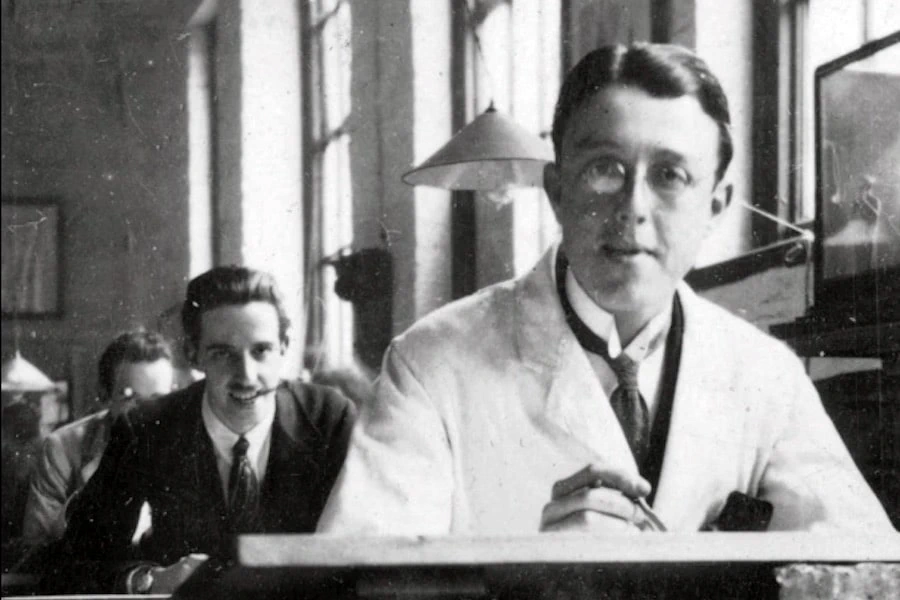 Manchester City Council’s chief architect from 1946 until his retirement in 1961..[4] opening as a concert hall in 1951. As well as housing the Hallé Orchestra, it was used for pop and rock concerts. A Wurlitzer organ from the Paramount Cinema in Manchester took four years to install before its first use in public in a BBC programme broadcast in September 1977. When the hall closed, the organ, which was on loan, was moved to the great hall in Stockport Town Hall.[5] The Hallé Orchestra moved to the Bridgewater Hall in 1996 and the Free Trade Hall was closed by Manchester City Council.
Manchester City Council’s chief architect from 1946 until his retirement in 1961..[4] opening as a concert hall in 1951. As well as housing the Hallé Orchestra, it was used for pop and rock concerts. A Wurlitzer organ from the Paramount Cinema in Manchester took four years to install before its first use in public in a BBC programme broadcast in September 1977. When the hall closed, the organ, which was on loan, was moved to the great hall in Stockport Town Hall.[5] The Hallé Orchestra moved to the Bridgewater Hall in 1996 and the Free Trade Hall was closed by Manchester City Council.
In 1997 the building was sold to private developers despite resistance from groups such as the Manchester Civic Society, who viewed the sale as inappropriate given the historical significance of the building and its site. After the initial planning application was refused by the Secretary of State, a second modified planning application was submitted and approved. Walters’ original facade was retained, behind which architects Stephenson Bell designed a 263-bedroom hotel, demolishing Howitt’s post-war hall but preserving the main staircase and the 1950s statues that were formerly attached to its rear wall. The hotel opened in 2004, having cost £45 million.[2]
Architecture
The Italian palazzo-style hall was built on a trapeziform site in ashlarMasonry of squared and finely cut or worked stone, commonly used for the facing of a building. sandstone. It has a two-storey, nine-bay facade and concealed roof. On Peter Street, its ground floor arcade has rectangular piers with round-headed arches and spandrels bearing the coats of arms of the Lancashire towns that took part in the Anti-Corn Law movement. The upper floor has a colonnaded arcade, its tympana frieze is richly decorated with carved figures representing free trade, the arts, commerce, manufacture and the continents. Above the tympanum
 Area above the lintel of a dorway or the base of a pediment, often richly decorated. is a prominent cornice
Area above the lintel of a dorway or the base of a pediment, often richly decorated. is a prominent cornice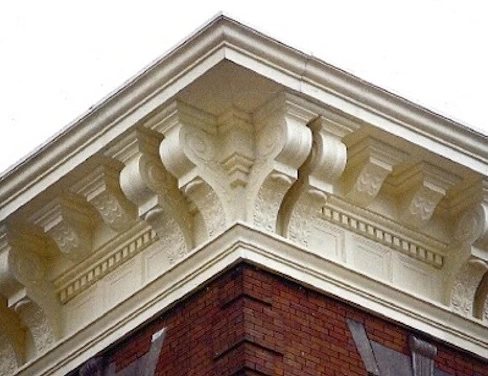 Horizontal moulding crowning a building or part of a building, such as over a door or window, or at the junction of an interior wall and ceiling. with balustraded parapet. The upper floor has paired Ionic columns to each bay and a tall window with a pedimented architrave behind a balustraded balcony.[1] The return sides have three bays in a matching but simpler style of blank arches. The rear wall was rebuilt in 1950–51 with pilasters
Horizontal moulding crowning a building or part of a building, such as over a door or window, or at the junction of an interior wall and ceiling. with balustraded parapet. The upper floor has paired Ionic columns to each bay and a tall window with a pedimented architrave behind a balustraded balcony.[1] The return sides have three bays in a matching but simpler style of blank arches. The rear wall was rebuilt in 1950–51 with pilasters Decorative architectural element used to give the appearance of a supporting column, to articulate an extent of wall. surmounted by relief figures representing the entertainments that took place in the old hall. The Large Hall was in a classical style with a coffered ceiling, the walls had wood panelling in oak, walnut and sycamore. Pevsner described it as “the noblest monument in the Cinquecento style in England”, whilst Hartwell considered it “a classic which belongs in the canon of historic English architecture.”[4]
Decorative architectural element used to give the appearance of a supporting column, to articulate an extent of wall. surmounted by relief figures representing the entertainments that took place in the old hall. The Large Hall was in a classical style with a coffered ceiling, the walls had wood panelling in oak, walnut and sycamore. Pevsner described it as “the noblest monument in the Cinquecento style in England”, whilst Hartwell considered it “a classic which belongs in the canon of historic English architecture.”[4]
After its closure, the hall was sold and after a protracted planning process and consultations with English Heritage, its conversion to a hotel was agreed. During the hotel’s construction, the Windmill Street and Southmill Street facades were demolished and the north block retained and connected by a triangular glazed atrium to a 15-storey block clad in stone and glass. Artefacts salvaged from the old hall, including 1950s statues by Arthur Sherwood Edwards and framed wall plaster autographed by past performers, decorate the atrium light well.[2]
Events
The Free Trade Hall was a venue for public meetings and political speeches and a concert hall. Charles Dickens performed here in the summer of 1857 in Wilkie Collins’s play The Frozen Deep. The first public meeting organised by the Manchester Society for Women’s SuffrageSociety whose aim was to obtain the same rights for women to vote for Members of Parliament as those granted to men, formed at a meeting in Manchester in January 1867. on 14 April 1868 is widely regarded as the start of the suffrage campaign.[6] In 1872 Benjamin Disraeli gave his One Nation speech. In 1904, Winston Churchill delivered a speech at the hall defending Britain’s policy of free trade. The Times called it “one of the most powerful and brilliant he has made.”[7] In 1905 the Women’s Social and Political Union (WSPU) activists, Christabel Pankhurst and Annie Kenney were ejected from a meeting addressed by the Liberal politician Sir Edward Grey, who repeatedly refused to answer their question on Votes for Women. Christabel Pankhurst immediately began an impromptu meeting outside, and when the police moved them on, contrived to be arrested and taken to court, marking the start of the militant WSPU campaign for the vote.[8]
After Sir Charles Hallé founded the Hallé Orchestra in 1858, its home was the Free Trade Hall until that was damaged in 1940 during the Manchester Blitz. The Hallé performed at the reopening in 1951 with the orchestra’s musical director and conductor, Sir John Barbirolli. Kathleen Ferrier sang at the event, ending with a performance of Elgar’s “Land of Hope and Glory”. The Hallé’s final concert in the hall was in 1996.[9]
Bob Dylan played at the hall in 1965, and again in 1966. In the late ’60s Frank Zappa and the Mothers of Invention, The Moody Blues, Tyrannosaurus Rex, (Marc Bolan) and The Dubliners played there amongst others. Pink Floyd played on five occasions as did Genesis in February 1973.[10] On 4 June 1976, the Lesser Free Trade Hall was the venue for a concert by the Sex Pistols at the start of the punk rock movement.[10][11]

